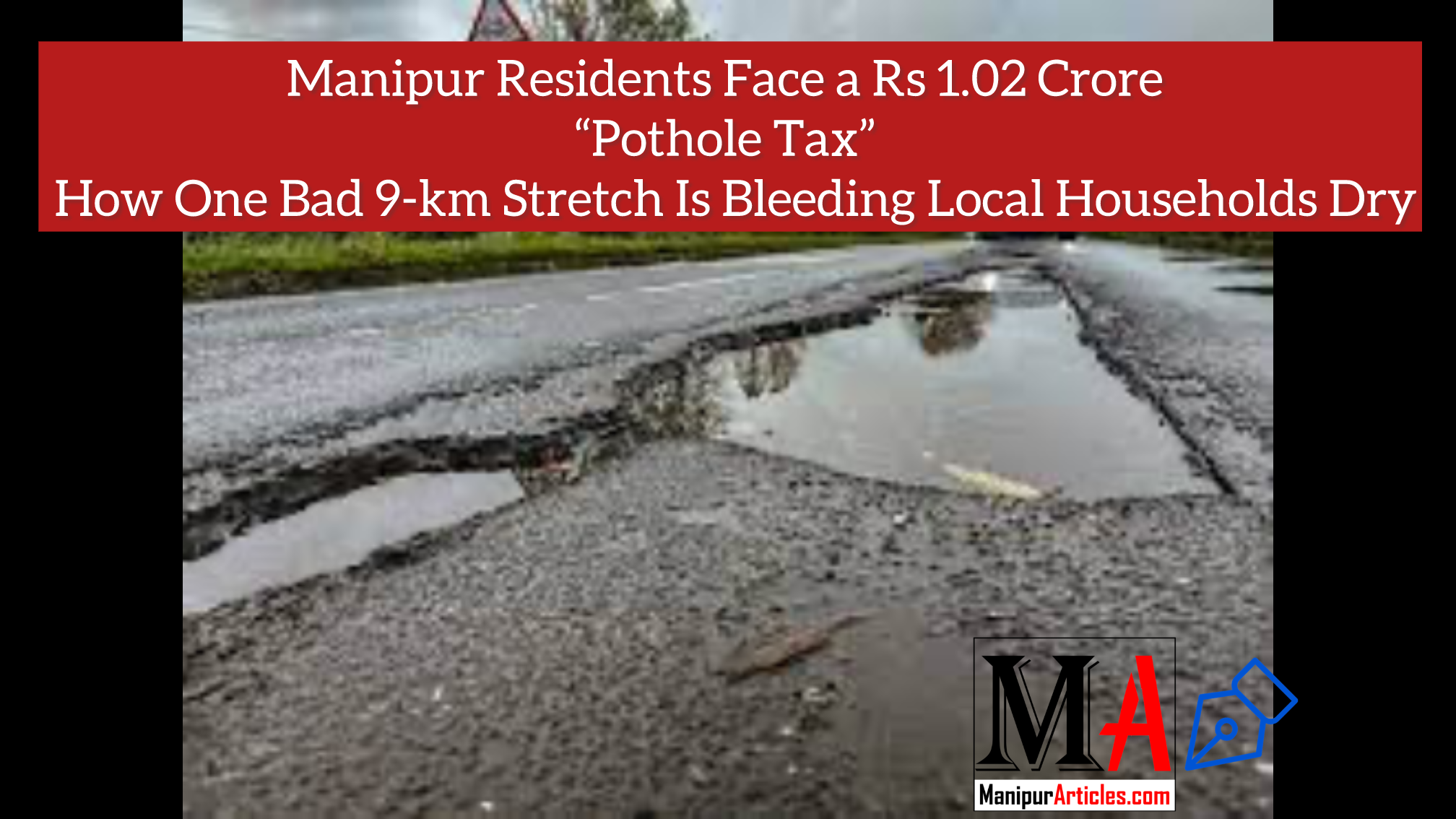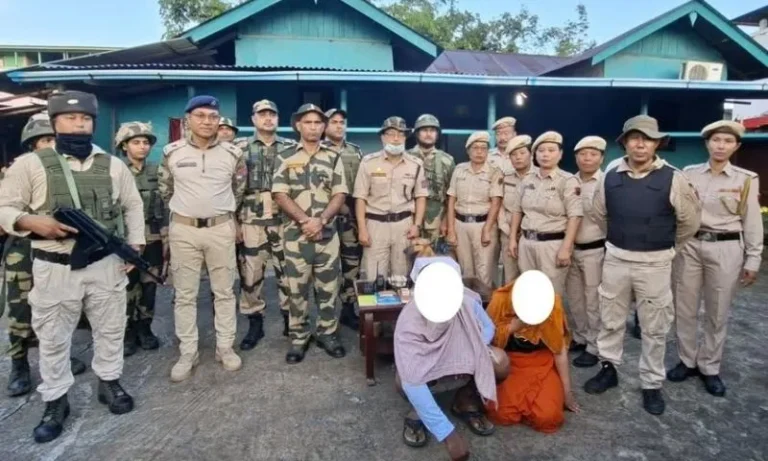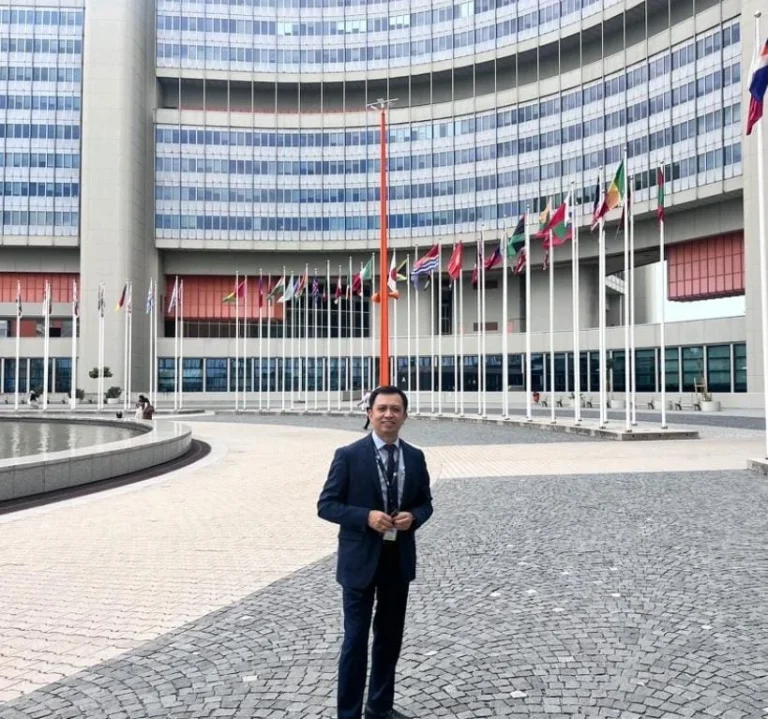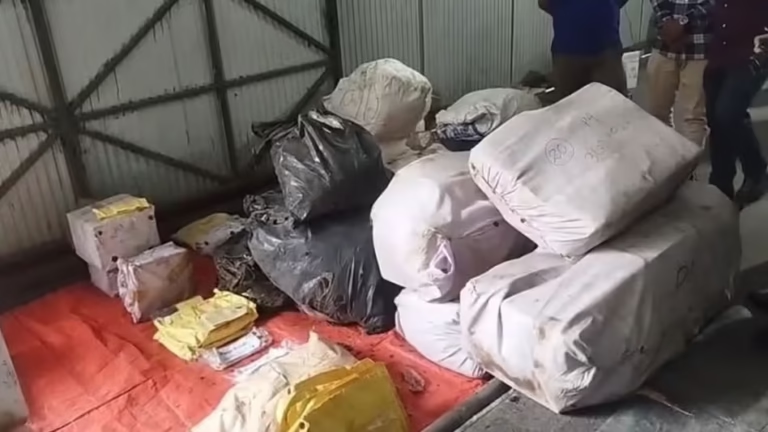Manipur Residents Face a Rs 1.02 Crore “Pothole Tax” — How One Bad 9-km Stretch Is Bleeding Local Households Dry
Residents along the 11-kilometre Mayai Lambi stretch of NH-137A — from Keishampat Junction to Samurou — say the road’s battered surface is costing local families roughly Rs 1.02 crore every year in extra fuel and repair bills. A community survey covering about 17,200 households found that around 3,440 vehicle-owning families face higher fuel consumption (an estimated additional 68,000 litres yearly) and rising maintenance costs; the road’s International Roughness Index (IRI) is reported at about 8 m/km, nearly four times acceptable standards. Residents have petitioned state authorities and the Governor demanding urgent repairs.
Mayai Lambi are experiencing, and unlike a one-off annoyance, it’s turning into a recurring economic drain. The locals call it a “pothole tax” — not literal taxation, but money siphoned away from essential household budgets to pay for extra petrol and repairs caused by a deteriorating highway. When infrastructure fails like this, it’s not just inconvenience; it’s stealthy poverty amplification.
A resident-led survey presented at a press conference on August 26 lays out stark figures: the 9-km stretch on NH-137A that links Keishampat Junction to Hiyangthang suffers from severe surface deterioration with an IRI around 8 m/km — about four times worse than acceptable road smoothness standards. The survey analyzed roughly 17,200 households in the corridor; of these, about 3,440 families regularly use the road by vehicle (80% on two-wheelers, 20% on four-wheelers). The weakened road surface causes an estimated extra 68,000 litres of fuel consumption per year — roughly an additional Rs 68 lakh — and about Rs 34.4 lakh more in vehicle maintenance annually. Add them up and the cumulative “pothole tax” comes to Rs 1.02 crore every year for the affected population.
Where this road fits into the local map
Mayai Lambi is more than an asphalt line; it’s an artery connecting small towns and villages — Mongsangei, Langthabal, Hiyangthang, Samurou, Wangoi, and Mayang Imphal — with the city’s commercial and administrative centers. Despite being upgraded to national highway standards under NH-137A, the specific 11-km patch has sunk into disrepair, leading to frequent cracks, potholes and waterlogging. For daily commuters — schoolchildren, service workers, traders — the road’s condition shapes how they spend time and money every day.
Frequently Asked Questions (FAQs)
Q1: What exactly is the “pothole tax” the article mentions?
A1: “Pothole tax” is a community term describing the extra money households pay annually because of a damaged road — higher fuel use, more frequent tyre and suspension repairs, and related expenses. For the Mayai Lambi stretch, residents estimate this hidden cost at Rs 1.02 crore per year, combining extra fuel and maintenance bills.
Q2: How did residents calculate the extra fuel and repair costs?
A2: The community survey used vehicle ownership data and traffic patterns from about 3,440 vehicle-owning households in the area, and employed the World Bank’s HDM-4 model to estimate increased fuel consumption (10–15% more on degraded surfaces). They estimated 68,000 litres of extra fuel and additional Rs 34.4 lakh in maintenance costs annually.
Q3: Who is responsible for repairing this section of road?
A3: The stretch is part of NH-137A, so national highway authorities in coordination with the state government are the primary agencies accountable for maintenance and upgrades. Residents have already petitioned the Governor and the District Commissioner to intervene.
Q4: Would patch repairs be enough to stop the “pothole tax”?
A4: Quick patching can reduce immediate hazards but often fails as a long-term solution if the base pavement or drainage is compromised. Durable solutions — resurfacing or full reconstruction depending on the technical assessment — are needed to permanently reduce extra fuel and repair costs.
Q5: How can citizens ensure repairs are done properly and not just cosmetically?
A5: Demand a public technical assessment, transparent tendering, a clear timeline, and third-party quality verification. Keep records (photos, receipts) and use RTI or local oversight bodies to follow project execution and maintenance commitments.





